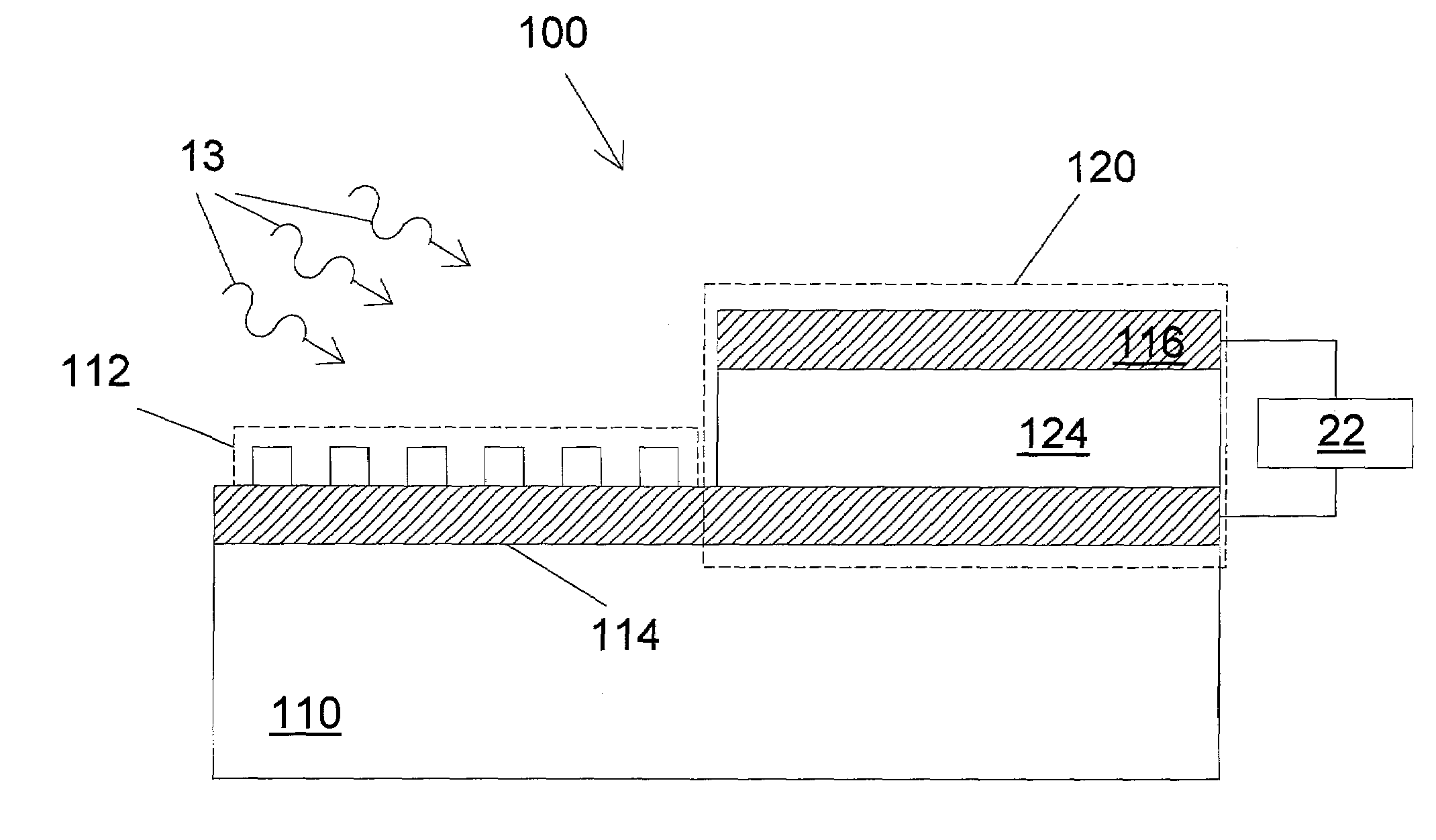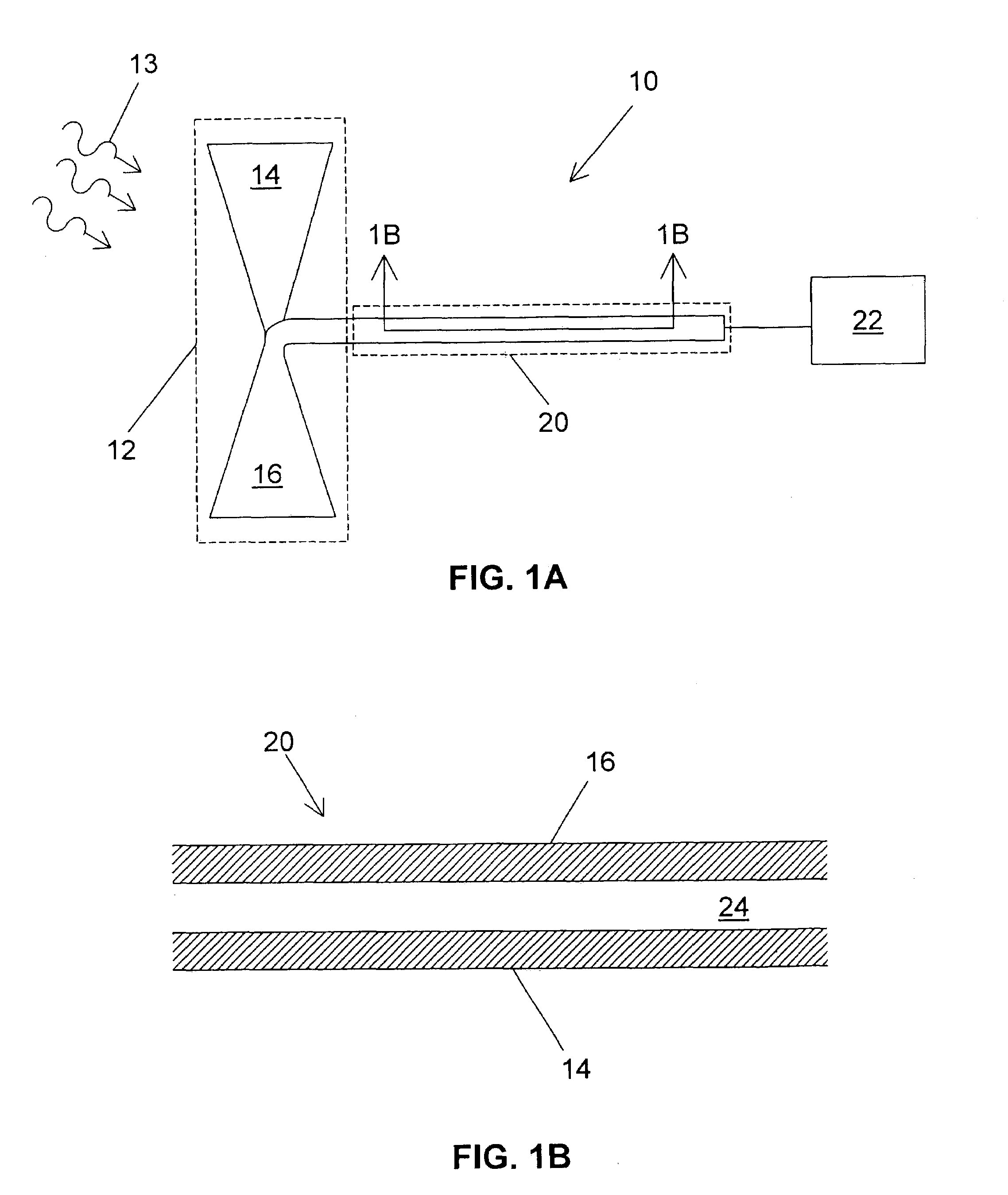Surface plasmon devices
a surface plasmon and plasmon technology, applied in the direction of instruments, semiconductor lasers, optical elements, etc., can solve the problems of inability to operate at terahertz frequencies or higher, limited device speed, and relatively expensive fabrication of semiconductor-based devices,
- Summary
- Abstract
- Description
- Claims
- Application Information
AI Technical Summary
Benefits of technology
Problems solved by technology
Method used
Image
Examples
Embodiment Construction
[0087]The following description is presented to enable one of ordinary skill in the art to make and use the invention and is provided in the context of a patent application and its requirements. Various modifications to the described embodiments will be readily apparent to those skilled in the art and the generic principles herein may be applied to other embodiments. Thus, the present invention is not intended to be limited to the embodiment shown but is to be accorded the widest scope consistent with the principles and features described herein.
[0088]Although the aforedescribed prior art devices and theoretical disclosures regarding sophisticated manipulation of surface plasmons, such as stimulated emission and stimulated absorption, have been made over the past twenty-five years, the Applicants are unaware of presently available, practical devices that actually allow such manipulations. Recent progress in tunneling junction technology by the assignee of the present application has...
PUM
| Property | Measurement | Unit |
|---|---|---|
| optical frequencies | aaaaa | aaaaa |
| temperature | aaaaa | aaaaa |
| thick | aaaaa | aaaaa |
Abstract
Description
Claims
Application Information
 Login to View More
Login to View More - R&D
- Intellectual Property
- Life Sciences
- Materials
- Tech Scout
- Unparalleled Data Quality
- Higher Quality Content
- 60% Fewer Hallucinations
Browse by: Latest US Patents, China's latest patents, Technical Efficacy Thesaurus, Application Domain, Technology Topic, Popular Technical Reports.
© 2025 PatSnap. All rights reserved.Legal|Privacy policy|Modern Slavery Act Transparency Statement|Sitemap|About US| Contact US: help@patsnap.com



